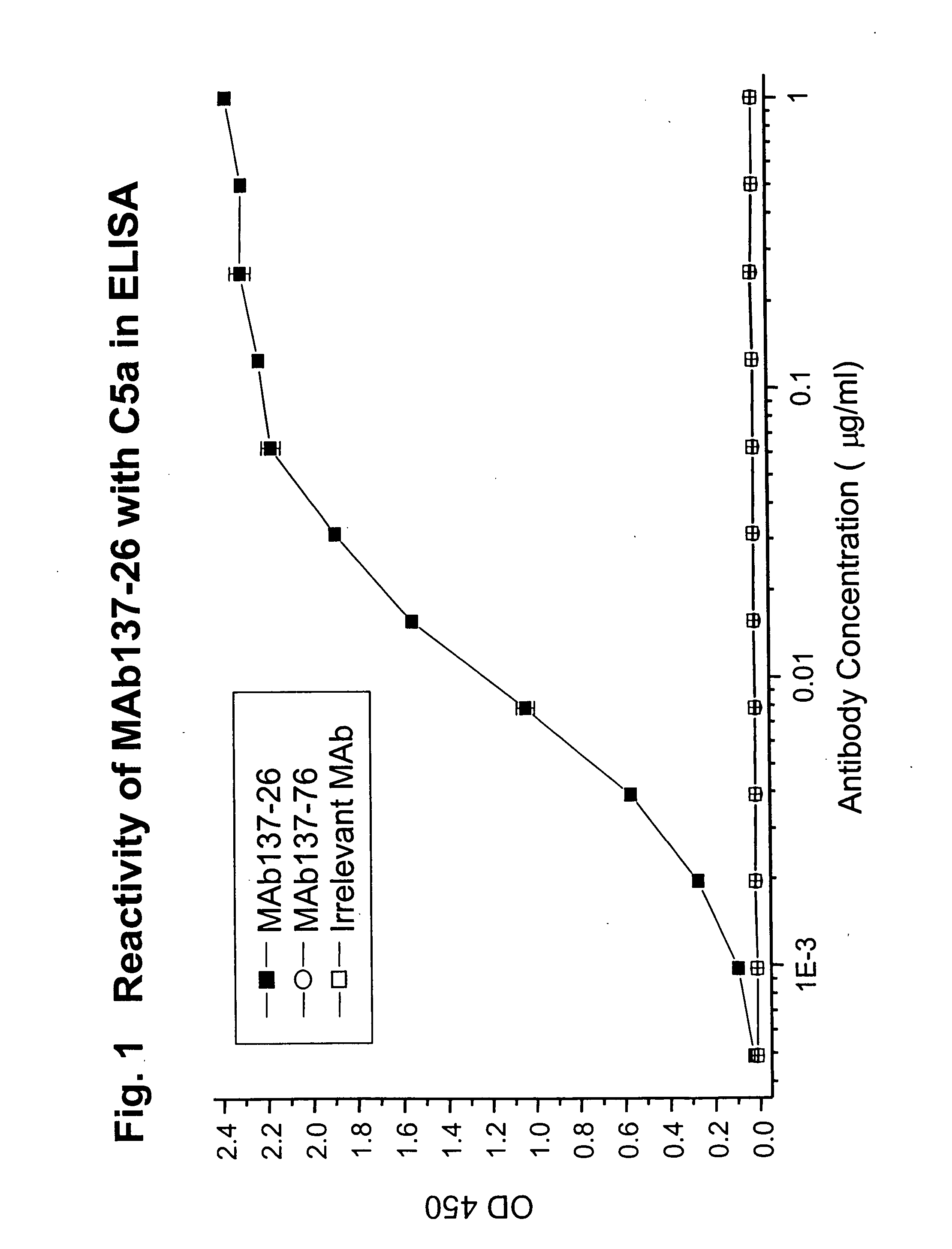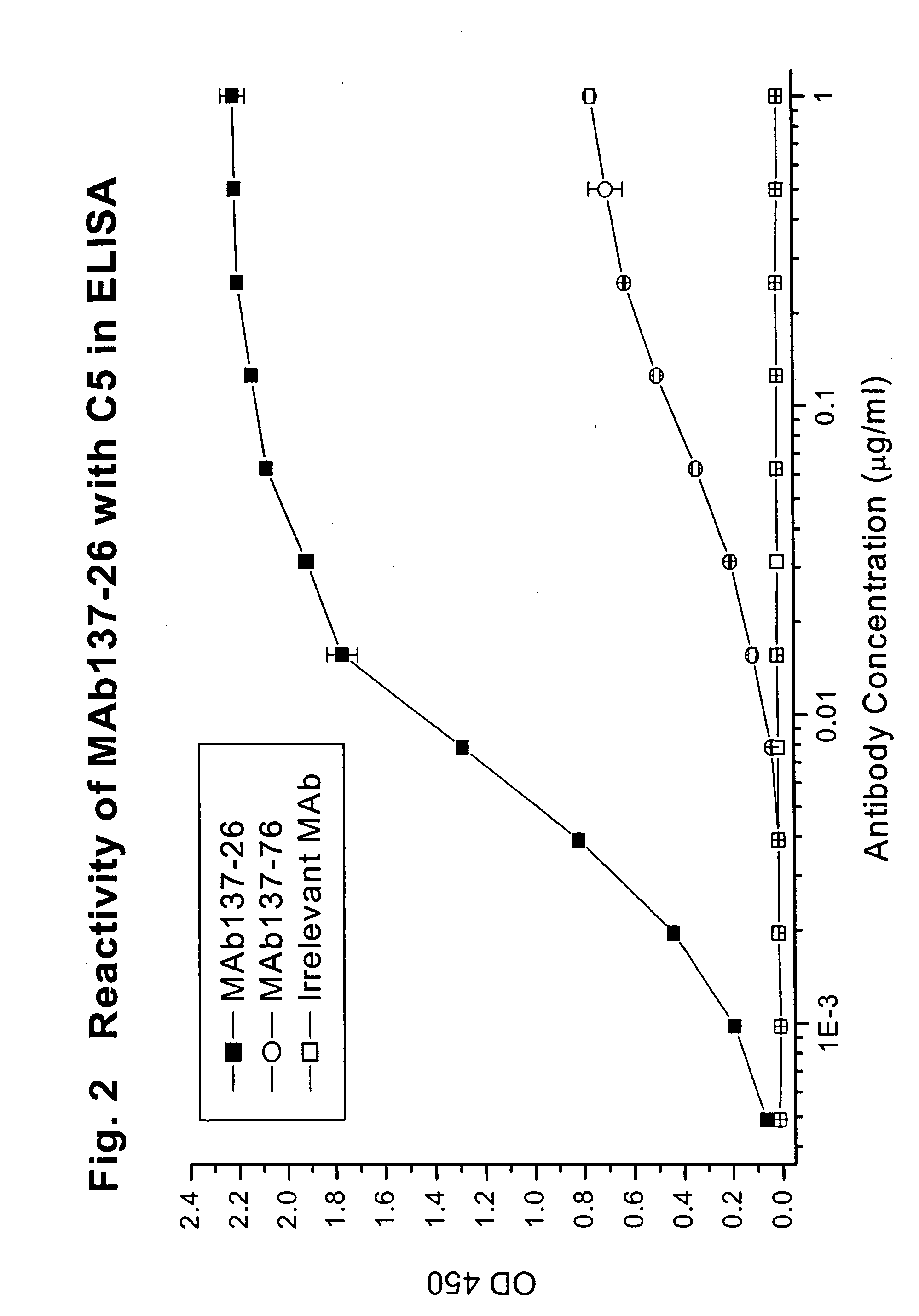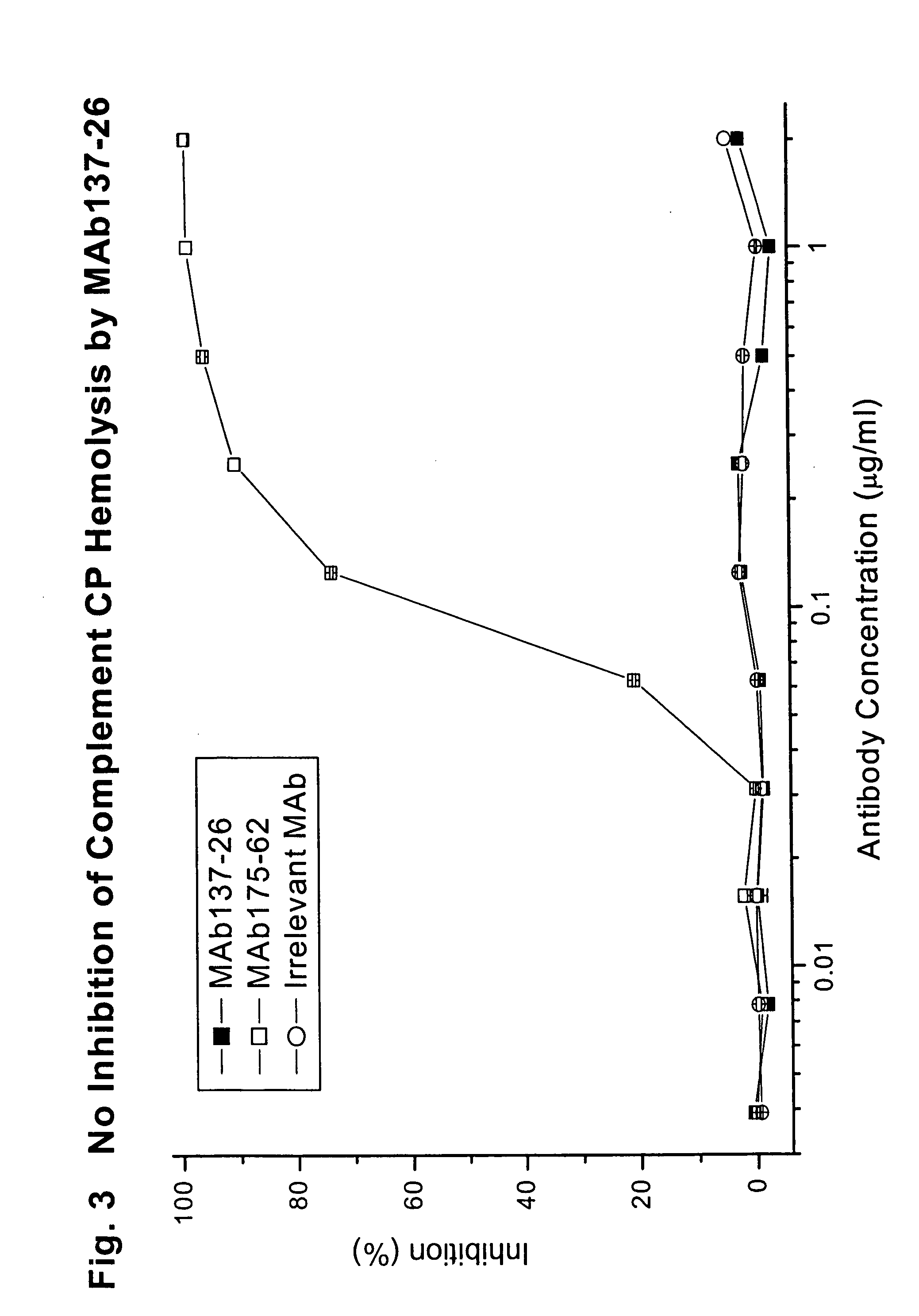Complement pathway inhibitors binding to C5 and C5a without preventing formation of C5b
- Summary
- Abstract
- Description
- Claims
- Application Information
AI Technical Summary
Benefits of technology
Problems solved by technology
Method used
Image
Examples
example 1
Reactivity of MAb 137-26 with Human C5 and C5a
[0074] MAb 137-26 was tested for reactivity with purified human C5 and recombinant C5a (Sigma, St. Louis, Mo.). The procedures of the ELISA are described above. MAb 137-26 binds to C5a in a dose-dependent manner with high potency (FIG. 1). Another anti-C5 MAb 137-76, specific for the β-chain of human C5, does not bind C5a, because C5a resides on the α-chain of C5. An isotype-matched irrelevant antibody used as a negative control also does not react with C5a. On the other hand, both MAbs 137-26 and 137-76 bind to C5 (FIG. 2).
[0075] The affinity equilibrium constant and the binding kinetic constants (association and dissociation) of MAb 137-26 with C5a and C5 were also determined by a BIAcore instrument (Pharmacia Biosensor AB, Uppsala, Sweden). All the binding measurements were performed in HEPES-buffered saline (HBS) (10 mM HEPES, pH 7.4, 150 mM NaCl, 3.4 mM EDTA, 0.005% Surfactant P20) at 25° C. To measure the binding rate constants o...
example 2
Complement-Mediated Hemolysis
[0076] To study the effects of MAb 137-26 on the activation of C5 in human serum, the antibody was tested for inhibition of hemolysis mediated by the classical and the alternative complement pathways.
[0077] For the classical pathway experiments, chicken RBCs (5×107 cells / ml) in gelatin / veronal buffered saline (GVB++) containing 0.5 mM MgCl2 and 0.15 mM CaCl2 were sensitized with purified rabbit anti-chicken RBC immunoglobulins at 8 μg / ml (Inter-Cell Technologies, Hoperwell, N.J.) for 15 minutes at 4° C. The cells were then washed with GVB++. The washed cells were re-suspended in the same buffer at 1.7×108 cells / ml. In each well of a round-bottom 96-well microtest plate, 50 μl of normal human serum (5.2%) was mixed with 50 μl of GVB++ of serially diluted MAb137-26 or an anti-C2 MAb 175-62 as a positive control. Then 30 μl of the washed sensitized chicken RBCs suspension was added to the wells containing the mixtures. Fifty microliters of normal human se...
example 3
Inhibition of 125I-C5a Binding to Purified Human Neutrophils by MAb 137-26
[0082] Human neutrophils were purified from human whole blood and diluted with Dextran T-500 / saline solution. The mixture was incubated at room temperature for about 20 minutes or until a clearly defined surface layer appeared. This surface layer was transferred to a 50-ml polypropylene centrifuge tube. Following centrifugation, the cell pellet was suspended in 30 ml of cold PBSB (1% BSA in PBS). The cell suspension was layered on top of 10 ml of Histopaque-1077 (Sigma, St. Louis, Mo.) in a 50-ml polypropylene centrifuge tube. Following another centrifugation, the cell pellet was then re-suspended in 20 ml of cold 0.2% NaCl for 30 seconds to lyse RBCs. Then, 20 ml of cold 1.6% NaCl were added to the cell suspension, recentrifuged, and the neutrophils were resuspended in PBSB. The neutrophils were kept on ice until being used for 125I-C5a binding.
[0083] MAb137-26 was serially diluted in 1.5 ml Eppendorf centr...
PUM
| Property | Measurement | Unit |
|---|---|---|
| Affinity | aaaaa | aaaaa |
Abstract
Description
Claims
Application Information
 Login to View More
Login to View More - R&D
- Intellectual Property
- Life Sciences
- Materials
- Tech Scout
- Unparalleled Data Quality
- Higher Quality Content
- 60% Fewer Hallucinations
Browse by: Latest US Patents, China's latest patents, Technical Efficacy Thesaurus, Application Domain, Technology Topic, Popular Technical Reports.
© 2025 PatSnap. All rights reserved.Legal|Privacy policy|Modern Slavery Act Transparency Statement|Sitemap|About US| Contact US: help@patsnap.com



